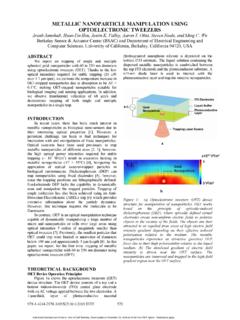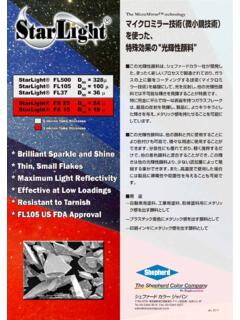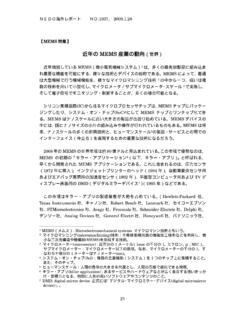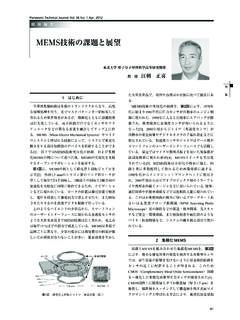Transcription of A Two-Axis MEMS Scanner Driven by Radial Vertical ...
1 A Two-Axis MEMS Scanner Driven by Radial Vertical combdrive Actuators Sheng-jie Chiou1, Tien-liang Hsieh1, Jui-che Tsai1, Chia-Wei Sun2, Dooyoung Hah3, and Ming C. Wu4 1 Graduate Institute of Electro-Optical Engineering and Department of Electrical Engineering, National Taiwan University No. 1, , Roosevelt Rd., Taipei 10617, Taiwan Tel +886-2-2363-5251 Ext. 247, Fax +886-2-3366-3686, E-mail: 2 Medical Electronics and Device Technology Center, Industrial Technology Research Institute, Hsinchu, Taiwan 3 Department of Electrical and Computer Engineering, Louisiana State University, Baton Rouge, LA 70803, USA 4 Department of Electrical Engineering and Computer Sciences and Berkeley Sensor and actuator Center (BSAC), University of California, Berkeley, CA 94720-1774, USA Abstract We report a Two-Axis MEMS Scanner Driven by Radial Vertical combdrive actuators.
2 The device is fabricated by a five-layer polysilicon surface micromachining process. A cross-bar spring structure consisting of lower and upper torsion springs is designed to achieve two rotational degrees of freedom, enabling the dual-axis rotation. Both the Vertical comdrive actuators and the torsion springs are hidden underneath the mirror to achieve a small form factor. Mechanical rotation angles of at 42V and at 63V are obtained for rotation about the lower and upper springs, respectively. Keywords: Two-Axis Scanner , Radial comb-drive actuators, small form factor, surface micromachining 1 INTRODUCTION Advances in optical fiber communication, display technologies, and biological imaging and tomography have been the major driving forces for the development of MEMS scanners [1].
3 Particularly, Two-Axis scanners are of great interest as they enable the two-dimensional (2-D) steering of optical beams. Among all the actuation mechanisms, electrostatic actuation has been one of the most popular approaches for driving MEMS devices. Parallel-plate electrostatic actuators have simple structures; however, their displacements or rotation ranges are limited by the pull-in effect. Vertical combdrive actuators are more attractive as they are free from the pull-in effect and also offer larger force densities.
4 Typically, a gimbal structure exists in a dual-axis Vertical - combdrive micromirror to achieve two rotational degrees of freedom (DOFs) [2]. It is desirable to eliminate the gimbal so that the device form factor can be reduced. Vertical combdrive actuators in conjunction with the leverage mechanism were used in gimbal-less Two-Axis scanners [3,4]. The device structures were relatively complicated and required delicate mechanical designs. In this paper, we propose using Radial Vertical combdrive actuators to eliminate the need of gimbals in Two-Axis scanners.
5 Similar Radial -comb arrangement was demonstrated previously by others; however, their achieved rotation angle was relatively small (2 mrad) [5]. In our device, a cross-bar spring structure consisting of lower and upper torsion springs is deployed to obtain two rotational DOFs, enabling the dual-axis rotation. Both the actuators and the torsion springs are hidden under the mirror to achieve a small form factor. Mechanical rotation angles of (42V) and (63V) are attained for rotation about the lower and upper springs, respectively.
6 MirrorAnchor to the mirrorUpper torsion springUpper movable combLower fixed combAnchor to the substrateLower torsion springAnchor to the upper torsion springs Figure 1. Schematic of the Two-Axis MEMS Scanner with Radial Vertical combdrive actuators and a cross-bar spring structure. 83 TuP15 14:30 17:301-4244-0641-2/07/$ 2007 IEEE2 DESIGN AND FABRICATION Figure 1 is the schematic drawing of the Two-Axis Scanner . It is imaginarily dismantled into three tiers for a clearer illustration. The device is fabricated using SUMMiT-V surface micromachining process offered by Sandia National Laboratory.
7 It has five polysilicon layers, including one nonreleasable ground/shield layer (mmpoly0) and four structural layers (mmpoly1 to mmpoly4). The lower torsion springs and the fixed combs are made of the mmpoly1 (1- m thick) layer and the laminated mmpoly1+mmpoly2 stack ( m thick), respectively. Both the upper torsion springs and movable combs are fabricated with the mmpoly3 layer ( m thick). The top polysilicon layer, mmpoly4 ( m thick), is used for the mirror. The CMP (chemical mechanical planarization) process before the deposition of the top two polysilicon layers eliminates the topography underneath the mirrors.
8 They also provides a large gap spacing ( m) between the mirror and substrate. 3 DEVICE CHARACTERIZATION Figure 2 shows the SEM photos of the fabricated devices. The mirror in Figure 2(a) is intentionally cut into a circular shape to reveal the underlying structures. This particular device has one lower torsion spring on each side, different from the nominal device (Figure 1) which has two on each side. The upper torsion springs are not shown in the photo as they are hidden under the bars extruding from the circular mirror.
9 Figure 2(b) is photo of the nominal device. Anchor to the substrateLower torsion springMirrorUpper movable combLower fixed comb MirrorProbing pad (a) (b) Figure 2. SEM photos of (a) a device with a circular mirror and (b) the nominal device. Figure 3 is the DC characteristic of the nominal device. The mechanical rotation angles are at 42V and at 63V for rotation about the lower and upper springs, respectively. Unlike a normal combdirve actuator , the gaps between fingers change during rotation, leading to lateral instability.
10 The rotation about the upper springs is more susceptible to lateral instability due to the asymmetric spring structure and therefore has a smaller scan range. With a symmetric spring design, the scan angles for the two axes are predicted to balance. The resonant frequencies are first obtained with the modal analysis using ANSYS (Figure 4). They are 18 kHz and 24 kHz for the aforementioned two rotation modes, respectively. Experimental measurements of the resonant frequencies are still in progress. 0 102030405060708001234567 Angle (deg)VoltageRotation about the lower springsRotation about the upper springs(V)Mechanical Rotation Angle (deg.)








